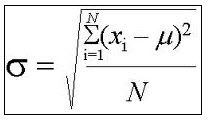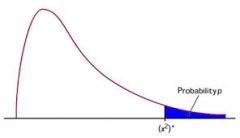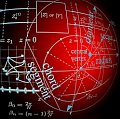Wilcoxon Signed-Ranks Calculator
Instructions : This calculator conducts a Wilcoxon Signed-Ranks Test for two paired samples. This test applies when you have two samples that are dependent (paired or matched). Please select the null and alternative hypotheses, type the sample data and the significance level, and the results of the Wilcoxon test for two dependent samples will be displayed for you:
When to Use the Wilcoxon Signed-Ranks Test?
More about the Wilcoxon Signed-Ranks test so you can understand in a better way the results delivered by the solver: The Wilcoxon Signed-Ranks test for two dependent samples is the non-parametric alternative for a t-test for two paired samples, which is used when some of the assumptions required for the t-test are not met, namely, either the measurement level of the data is less than interval, or the samples do not come from normally distributed populations. The departure from the normality assumption is particularly critical with lower sample sizes (\(n \le 30\)) and it can render the results of a t-test to be very unreliable, for which reason it would be advisable to use the Wilcoxon Signed-Ranks test in that case
The Wilcoxon Signed-Ranks test is a hypothesis test that attempts to make a claim about the population median difference of scores from the paired samples. More specifically, a Wilcoxon Signed-Ranks test uses sample information to assess how plausible it is for population median difference to be equal to zero. The test has two non-overlapping hypotheses, the null and the alternative hypothesis. The null hypothesis is a statement about the population median which indicates no effect, and the alternative hypothesis is the complementary hypothesis to the null hypothesis. The main properties of the Wilcoxon Signed-Ranks test for two paired samples are:
- The test required two dependent samples, which are actually paired or matched or we are dealing with repeated measures (measures taken from the same subjects)
- As with all hypotheses tests, depending on our knowledge about the "no effect" situation, the Wilcoxon Signed-Ranks test can be two-tailed, left-tailed or right-tailed
- The Wilcoxon Signed-Ranks test is non-parametric, which indicates that it does not require the normality assumption nor it requires interval level
- It does require the data to be measured at least at the ordinal level (so the data can be organized in ascending order)
- One technical requirement is that the distribution of the differences between the two paired groups needs to symmetrical in shape
The formula for the statistic for the Wilcoxon's Signed-Ranks test is:
\[T = \min \{W^+, W^-\}\]where \( W^+\) is the sum of positive ranks, and \(W^-\) is the sum of negative ranks. When number of pairs is large (\(n \ge 30\)), then normal approximation can be used, and the following statistic is used:
\[z = \frac{T- \frac{n(n+1)}{4} }{\sqrt{ \frac{n(n+1)(2n+1)}{24} }}\]Observe that this calculator will compute a signed-ranks critical value if the sample size is not large enough to use normal approximation. If the sample size is large enough, it will provide a z-statistic with a corresponding p-value, based on normal approximation.
This test has a parametric equivalent, which is the t-test for paired samples, for which you need to use this calculator .




